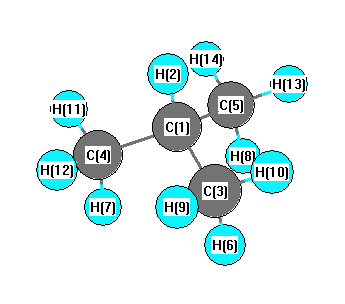.
| squib |
reference |
DOI |
| 1960Lide:1519 |
Dr Lide "STRUCTURE OF THE ISOBUTANE MOLECULE - CHANGE OF DIPOLE MOMENT ON ISOTOPIC SUBSTITUTION" J. Chem. Phys. 33(5) 1519-1522, 1960 |
10.1063/1.1731435 |
| 1976Hellwege(II/7) |
Hellwege, KH and AM Hellwege (ed.). Landolt-Bornstein: Group II: Atomic and Molecular Physics Volume 7: Structure Data of Free Polyatomic Molecules. Springer-Verlag. Berlin. 1976. |
|
| 1998Gus/Rui:163 |
M Gussoni, R Rui, G Zerbi "Electronic and relaxation contribution to linear molecular polarizability. An analysis of the experimental values" J. Mol. Struct. 447 (1998) 163-215 |
10.1016/S0022-2860(97)00292-5 |
| 1999Mir/Kri:67 |
NG Mirkin, S Krimm "Ab inito analysis of the vibrational spectra of conformers of some branched alkanes" J. Mol. Struct. 550-551 (2000) 67-91 |
10.1016/S0022-2860(00)00513-5 |
| NSRDS-NBS10 |
R. D. Nelson Jr., D. R. Lide, A. A. Maryott "Selected Values of electric dipole moments for molecules in the gas phase" NSRDS-NBS10, 1967 |
10.6028/NBS.NSRDS.10 |
| TRC |
Frenkel, M; Marsh, K.N.; Wilhoit, R.C.; Kabo, G.J.; Roganov, G.N.,Thermodynamics of Organic Compounds in the Gas State,Thermodynamics Research Center, College Station, TX, 1994 |
|
| webbook |
NIST Chemistry Webbook (http://webbook.nist.gov/chemistry) |
10.18434/T4D303 |












